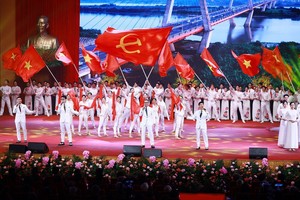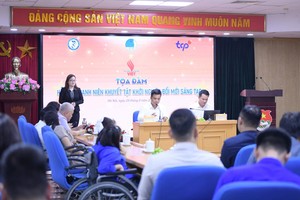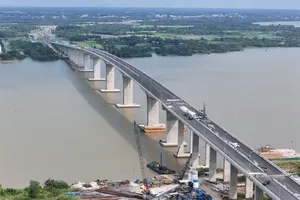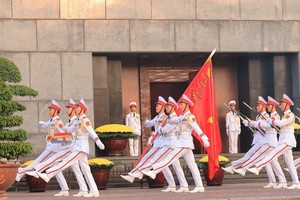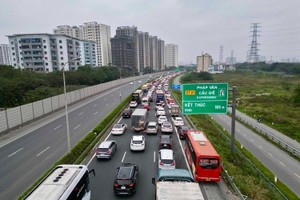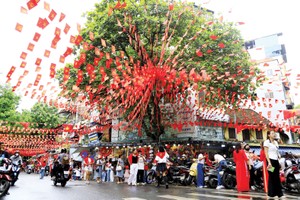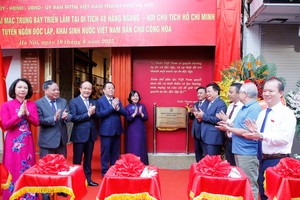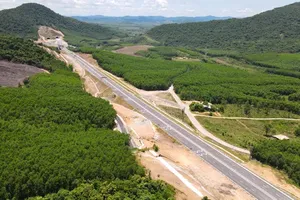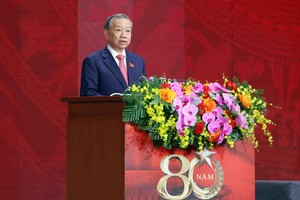Decisive gambit
From mid-1961, the US and the Saigon regime launched a campaign to insert spy commando teams into the North by air, land, and sea. Their primary focus was the rugged, mountainous Northwest, a region of dense forests, sparse population, and a long, porous border – ideal terrain for enemy agents to hide and maneuver.
It was in this context that Case File PY27 was born, marking the first major counter-espionage operation against commandos infiltrating the North by air. The case began on the night of May 27, 1961, when a team codenamed “Castor” parachuted onto a remote hilltop in what is now Son La Province.
According to the book “How We Ran the Secret Entry Program into North Vietnam”, 1961-1964 by Thomas L. Ahern Jr., Castor’s mission was twofold, namely sabotage and intelligence gathering on North Vietnam’s support for revolutionary forces in Laos. The enemy’s expectations were high, but a meticulously prepared counterintelligence operation awaited them.
On June 9, 1961, under the close watch of Vietnamese forces, the captured “Castor” radio operator sent his first message, scripted by the national soldiers: “Castor has landed safely. Preparing to contact local assets. Request resupply.” Four days later, the enemy scheduled a drop. However, the mission on July 2 ended in disaster when the C-47 resupply plane crashed in a swamp in Ninh Binh Province. The pilots were killed, and the surviving crew, including the chief pilot, were captured.
To keep the operation a secret, the case officers began a long and patient “game of tradecraft”. For eight months, they moved the captured Castor team through 80km of dense jungle, having them perform minor acts of sabotage, like cutting telephone wires, to build credibility. The enemy continuously verified their position via radio triangulation and ground agents. To cement their trust, they issued a final, decisive order: destroy Ta Vai Bridge.
Minister of Public Security Tran Quoc Hoan personally directed the response by staging an explosion convincing enough to fool the enemy, but without damaging the strategic bridge. The revolutionary forces set off a massive charge on a nearby mountainside. The deception worked perfectly; enemy ground agents confirmed a successful mission, while the bridge remained completely unharmed.
Ho Thanh Can, a technical reconnaissance officer who worked on these cases for nearly a decade, recalled the immense pressure. “I don’t remember the exact number of messages we sent or received”, he said. “What I always remember is the leadership’s constant reminder: be cautious, be meticulous, be absolutely vigilant. And for nearly ten years, we never exposed a secret, never lost contact, and never delayed a single message.”
Full circle of weapons
From late 1963 to late 1967, in a related operation, Case File LH17, the revolutionary forces lured the enemy into making numerous resupply drops. The haul was staggering, consisting of 21 captured agents and 128 crates containing the most advanced communications gear of the era and nearly 2,000kg of high explosives.
“The captured equipment, explosives, and weapons were all collected and sent to the southern battlefield”, shared Senior Lieutenant Colonel Cam Tuan. “And so, a full circle of weapons, sent by the enemy from South to North for their spies, was gathered by us to be sent back South to supply our own frontline.”
Mastering the “game”
The harsh, misty mountains of the Northwest, once seen as an obstacle, were transformed by the Vietnamese forces into a silent, sprawling “battle grid” to track the enemy. The PY27 operation was not a single case but a cluster of six simultaneous ones. Over many years, these operations evolved beyond mere detection and capture, to a much higher level of tradecraft, proactively directing and controlling the enemy’s own activities.
Senior Lieutenant Colonel Cam Tuan recalled how they deceived the enemy to maintain trust. When ordered to blow up a bridge, his teams staged it perfectly with fake explosions and smoke, convincing the enemy of their success while everything remained under the revolutionary forces’ control.
But this silent front was not without its losses. In early 1968, two long-controlled commandos from teams sent to reinforce Castor were stationed in Son La Province. “During a briefing for May Day, a moment when everyone’s guard was down, the two agents suddenly seized weapons”, Senior Colonel Tuan recounted, the memory still vivid. “They murdered our cryptographer, Comrade Tiep, and an armed police soldier, Comrade Quy, before burning the camp and escaping into the forest.”
That tragic event brought an end to that specific operation after nearly five years. It was a painful reminder that even in a battle of wits, where “chess pieces” moved silently, the danger was always real.
Victory in the PY2T7 cluster wasn’t measured just by the number of spy teams eliminated, but by the fact that the Vietnamese forces had mastered the “game” inside the enemy’s own mind.
"When every enemy decision, from infiltration points to sabotage methods, was being steered by us, the counterintelligence battlefield had reached its ultimate expression of using intellect as the ultimate weapon," Mr. Tuan said.
These declassified stories are a testament to the bravery, intellect, and silent sacrifice of the People’s Public Security forces, where victory was born from a uniquely Vietnamese strength: a deep understanding of human nature, unwavering in the face of challenges, and gentle, yet razor-sharp to the very end.
Senior Lieutenant Colonel Cam Tuan reminisced about the challenges of that period: “There were instances where a telegram, once deciphered, remained exceedingly cryptic. It contained arcane vocabulary such as ‘ngo hau’ (in the hope that) or ‘triet thoai’ (to withdraw completely)... On numerous occasions, our division drafted messages for commando spies to transmit to their headquarters, requesting North Vietnamese currency from the State Bank of Vietnam and various forms of Northern identification documents. My conjecture was that our side intended to probe the extent to which the American and puppet regime had acquired or counterfeited our official papers, as a precautionary measure. However, throughout this surveillance, both the Americans and the Saigon administration remained conspicuously silent, offering no response whatsoever.”
To facilitate infiltration, the adversary employed numerous diversionary tactics, such as bombarding distant targets to misdirect attention. For operational security, their spy teams communicated using deliberately convoluted telegrams. These messages featured a complex blend of English, French, and archaic Vietnamese terms to maintain secrecy and confound decryption efforts.

